The heat was sweltering, and we were exhausted. After a grueling 30-hour journey from Los Angeles, our family of five had finally arrived in Maputo, Mozambique. Just one final step—customs—stood between us and two weeks of catching up with my in-laws and watching our kids run along the beach with their cousins.
Arms weighed down with bags and sleepy kids, we reached the front of the line. That’s when we were told that our children each needed their photo taken to enter the country.
For most families, this would be a minor inconvenience. But for us, it became a significant challenge. Our seven-year-old son is autistic and non-speaking, and his sensory system can easily become overloaded. What should have been a simple photo took 45 minutes, thanks to some difficult requirements: our son had to be alone in the frame, with his eyes open, and not crying. After 30 hours in transit, he was completely dysregulated, and meeting these conditions was almost impossible—especially while trying to navigate a language barrier!
As a family with loved ones on two continents, we feel privileged to be able to take our children to visit my spouse’s side of the family. But ensuring our son’s needs are accommodated adds unique hurdles to the process.
Like many autistic children, our son experiences “demand avoidance,” a strong resistance to anything that feels compulsory. He operates on his own timing, and anything that threatens his autonomy—being rushed into the car before he’s ready, for example—can lead to a meltdown. As you can imagine, this doesn’t bode well for air travel, where the demands are relentless.
…not to mention the changes in air pressure, being confined to a small space, and the other aspects of flying that are uncomfortable for most of us, but can be unbearable for those with sensory sensitivities.
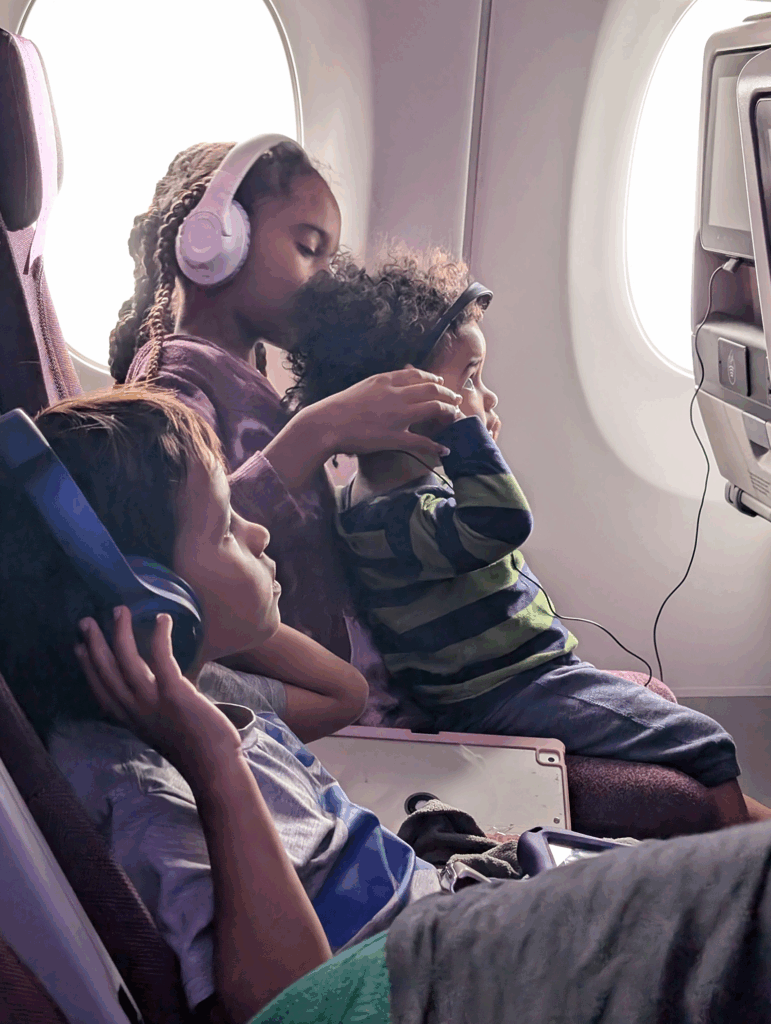
And once we land, a whole new set of challenges emerges: unfamiliar people, food, and environments. When he was four, even an unfamiliar car seat triggered a meltdown that left him shaken for days. But over the years, experience has taught us ways to ease those transitions—for him, and for us, too.
First and foremost, my biggest travel hack is regulating my own emotions, so that I can be there to support my son. To do this, I handle my own packing and planning as early as possible, removing as many potential stressors so that I’m not feeling rushed and anxious. This allows me to be a peaceful source of co-regulation for my son. Mindset shifts are also crucial. I’ve learned to manage my expectations—for example, realizing that I probably won’t get a chance to read that book I packed or enjoy an in-flight movie. I also constantly remind myself that my son isn’t trying to give me a hard time; he’s having a hard time. This helps me step out of frustration and into empathy, and helps me to show up as the mom he needs in that moment. For us, a “successful” flight isn’t about avoiding every challenge—it’s about staying calm and regulated in the midst of them.
That being said, here are some strategies that make travel easier:
After that chaotic arrival into Mozambique, we vowed to never fly again without doing our paperwork in advance. While many countries offer visas upon arrival, eliminating surprises is well worth it for families like ours.
Another essential: plenty of snacks and portable chargers for the plane. It only took one mid-flight meltdown from a dead tablet to convince us to stock up on multiple portable chargers. Plus, favorite foods and videos/games on a tablet can bring a sense of familiarity and comfort to an uncomfortable experience.
Speaking of snacks: always bring more than you think you’ll need! Our son is a little more adventurous with food these days, but as a preschooler his diet was very restricted. On our trip to Mozambique, I had packed 8 boxes of graham crackers (the one specific brand that he would eat), and that is literally all he consumed for 2 weeks straight. Even things like fruit and yogurt, which he enjoyed at home, felt too different in a new place. It wasn’t ideal, but it kept him fed!
On a recent trip to Kenya, two other choices made a huge difference for us. First, we updated our son’s AAC (Augmentative and Assistive Communication) device with pictures of his grandparents and cousins. Just before we left, I caught him scrolling through the images, tapping on their names. It helped him understand that we weren’t just visiting a place—we were visiting our beloved family, and it seemed to help him connect with them when we arrived.
We also created a “social story”: a miniature picture book we made that illustrated every step of our journey: our suitcases, the airport, the connecting flights, his grandparents’ driveway. At each leg of the journey, we flipped to the next page together. That little book saved us as our son was refusing to board our final connecting flight—it reminded him that we were just one step away from landing in Kenya, and calmed him down far more than I’d anticipated!
Finally, if you’re traveling from a U.S. airport, the TSA Cares program is phenomenal! The first time we used it, we felt like a superhero had come to our rescue. We were basically assigned our very own TSA agent to take us through the security line start to finish, and her kind and understanding energy rubbed off on the whole family. Any parent of a child with support needs knows that impatience, sighs, and stares from other travelers can make a hard process even worse. The agent’s presence felt like a shield from any judgement or negativity as she gently helped our son stay in line and adjust to every step of the security process.
Traveling with an autistic child requires more planning, more patience, and definitely more snacks. But it’s worth it, because our neurodivergent children deserve to experience the world! My son deserves to run barefoot through the grass in his grandparents’ lush backyard and tend to their vegetable garden. He deserves endless chapatis, sweet masala chai, and sizzling Kenyan sausages. He deserves to giggle with his cousins and snuggle with his uncles and aunties. And as we keep learning how to best meet his needs, we look forward to making more and more joyful memories.
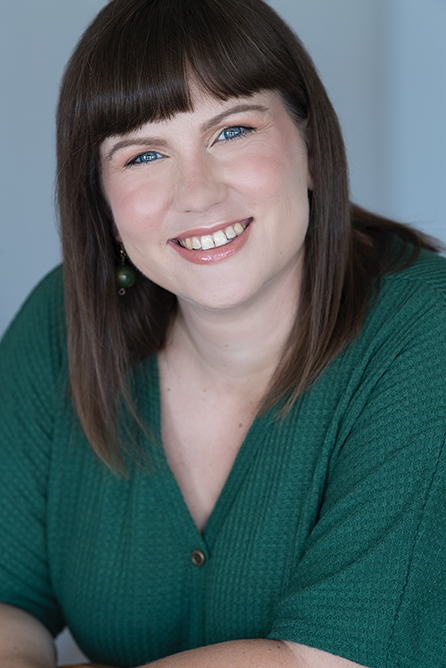
Ellie Hunja is the author of Blessings, New Mom: A Women’s Devotional and Teen Devotional for Girls. Her writing on faith, social justice, mental health, neurodiversity, and more has been featured on Her View from Home, Thought Catalog, The Mighty, and in print in TheMomCo Magazine and the book So God Made a Mother. An alum of Georgetown University and the University of Michigan, she lives in Los Angeles with her husband and three children.
Website: www.elliehunja.com
Instagram: @ elliehunja
Facebook: @ EllieHunjaWriter
I look at lived experiences or stories from the past, including my own, as a testament to how education empowers, especially for women. We may debate the definitions of minority or question why gender so often demands a divide, but the impact of education irrespective of where you belong remains undeniable. In 2021, while living in New Orleans, I came across the evocative oil painting by Norman Rockwell titled ‘The Problem We All Live With’. It depicted a young girl walking alongside the U.S. Marshals for safety, clutching a notebook in her arms. This image piqued my curiosity, leading me to learn more about Ruby Bridges, the girl in the painting. I was deeply moved by her extraordinary story as the first African American child to integrate an all-white elementary school. Her courageous journey sparked vital conversations about school desegregation and the right to education in the American South. Ruby Bridges’ story is not just one of historical significance but also of personal transformation. From a young girl confronting unimaginable adversity, she became a dedicated civil rights advocate, devoting her life to fighting racism. Her journey resonated with me, and I could not help but draw parallels to another remarkable woman—Savitribai Phule, a leading social reformer from India. Phule, born Dalit caste—one of the most marginalized groups in Indian society—boldly challenged the caste-based discrimination that defined her time. As the first female teacher in her community, she defied entrenched social norms. Every day, she carried an extra sari to school, knowing she would face verbal abuse and physical violence, including stones and cow dung thrown at her.
Though they lived in different times and places, Bridges and Phule shared much in common. Both exhibited unwavering persistence in the face of immense challenges. They fearlessly confronted atrocities, yet remained driven by their passion to bring about meaningful change for those most in need. In addition to their remarkable contributions to society, both women were also creative individuals— Bridges is known for writing children's books, while Phule was a celebrated poet. As a poet working in public health, I saw how important it is to have creative outlets to process the challenges we face. Lived experiences, especially today, serve as powerful reminders that creativity, resilience, and passion equip us to confront the world. Each of us has a unique voice, regardless of our background, nationality, or the times we live in. Expressing both struggles and successes is essential in building the courage to navigate life's unexpected challenges. Even more essential, is to find the medium or a tool through which these voices can be heard, for it is through this expression that change—or at the very least, action—begins.
Poetry, for me, in particular, has long been an unconscious tool. It is, however, not only helpful for expressing emotions but also for showing resistance, dissent, and highlighting the issues society often chooses to suppress. Poetry has the power to unleash both anger and love, motivation and hopelessness. It is a practice that we must embrace, for in doing so, we can give voice to what needs to be heard and spark the change we seek. I sometimes hesitate, when people consider it a form of activism because it feels natural. Why frame it as upheaval when poets simply observe and express what is genuine?
When I came to New Orleans from Kolkata in 2019, I was fascinated by how the intersections of caste and racism emerged as a recurring theme in my life. I had traveled outside India for the first time, filled with excitement to pursue my Master's in Public Health at Tulane University. Little did I know that within just a few months, the pandemic would change everything. Although I had always been aware of these issues, experiencing them up close in a city with such a rich art and jazz scene was a transformative experience. Across the Bay of Bengal and the Mississippi, through trams and streetcars, from Rabindranath Tagore to Louis Armstrong, a shared love of culture united these two cities. It brought me back to the poetry I once turned to for solace and reflection and began to openly embrace the idea that our feelings and actions must be shared through this powerful medium. Education and travel was key for me to truly see the world. I came to understand the value of art and the importance of learning about different cultures and history. Art also offered a powerful lens to interpret the past, express the present and imagine the future.
From my years working as a nutritionist focused on the management of severe acute malnutrition from West Bengal to New Orleans, the challenges, while offering valuable lessons, often felt insurmountable and led me to question my passion for public health, as driving meaningful change required immense and relentless effort. This came to a head during the pandemic, when reflecting on the many moments from my fieldwork and contrasting it to the current struggles faced by students like myself. I wrote a poem titled "To Humans Who Own," addressing the issues of overconsumption, food waste, and food insecurity.
All of a sudden you are making space, trying to fill-fit-assemble every rack,
Erasing those magnetic ambition-rust mixed with dried ketchup-reversed-blood spots,
It ain't gonna change our history of letting things die beneath plenty,
I am not your paranoia's answer! You've trashed any possibility with the convenience of new,
You've melted peace in abundance of manufactured vice-crew,
Now neither of your scared in solitude home-cooked dishes appeal anymore,
Nor has nature tired in bravely grilling guts to taste sinless some more.
From this, I realized that through poetry and storytelling I not only could express myself and make sense of the world around me, but that it could also serve as a powerful tool for capturing the lived experiences of those in my community. While working on a project at the Phyllis M. Taylor Center at Tulane University, with Dr. Lesley Ann Noel, we explored the creation of patient-centered and equitable health research using hands-on workshops. Here, poetry was utilized to document the personal experiences of individuals during the pandemic. By applying qualitative research methods, we aimed to understand how the residents of New Orleans navigated the challenges of COVID-19, allowing their voices to be heard in a way that traditional research methods often miss. Exhaustion, sleeplessness, fear, stagnancy, anxiety, lack of motivation, silence, new normal came out as some of the common themes.
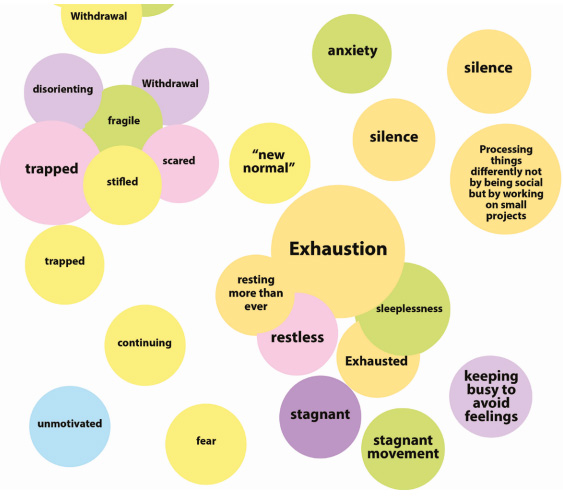
Recognizing its practicality and how it perfectly blended with my work, I published my first book of poems, Inmates of Voices. It covers different aspects of public health which requires constant problem-solving, compassion and self-reflection. Many professionals have experienced moments where they find themselves at the intersection of various allied fields like climate change, gender issues, mental health, child rights, and other issues that we may not have initially considered. Using poetry as a medium, I tried demonstrating how navigating through the ever-changing political and administrative landscape impacts both who we serve and those working in the field. With this book, the goal was never about education or empowerment but rather to instill confidence and provide a sense of direction while quietly supporting those in the journey of receiving care.
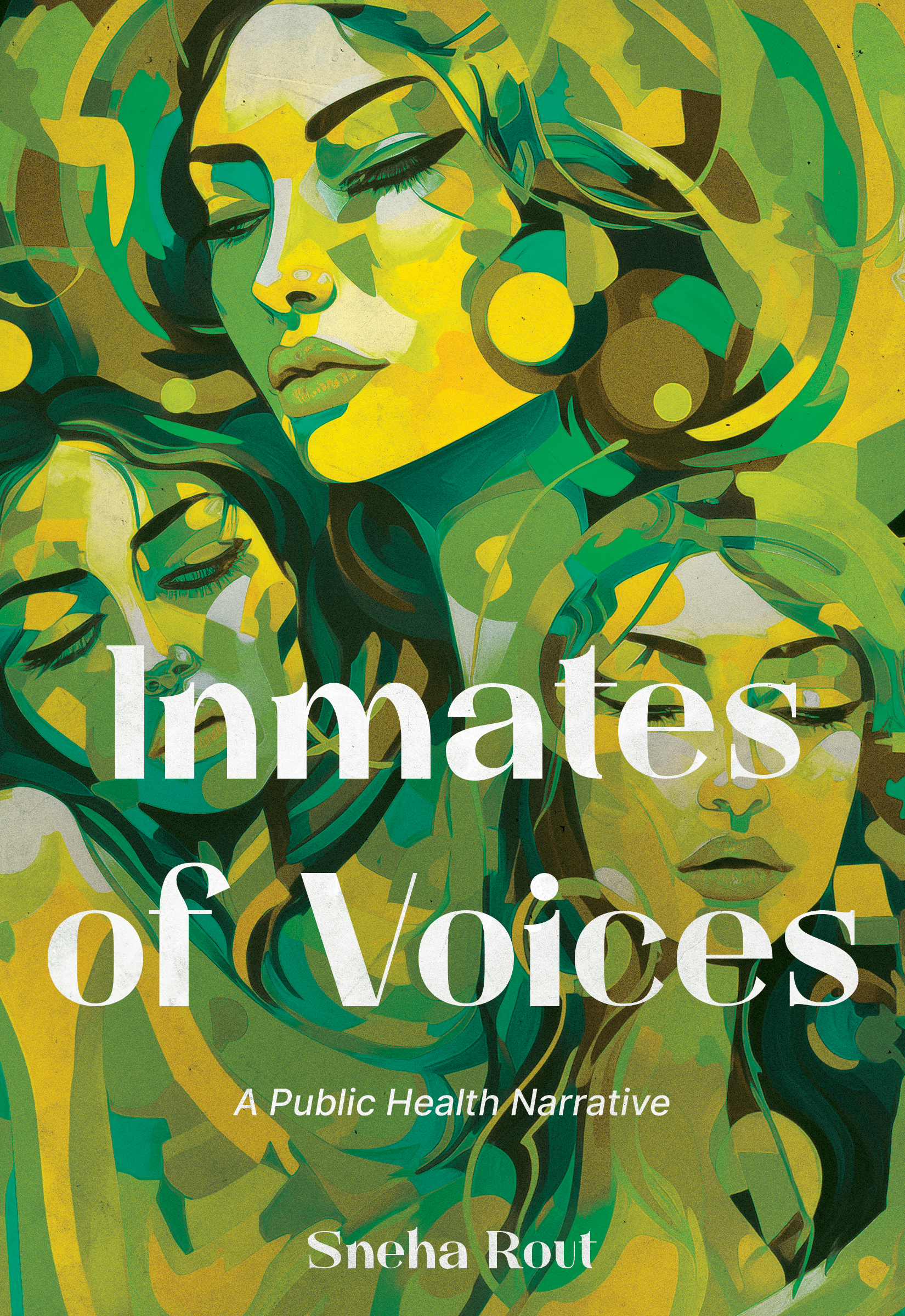
From my book , the poem ‘Barren’ delves into themes of reproductive health and the struggles of farmers facing hunger amidst crop failure. Here is an excerpt:
Twain equitably forgiving taken for offerings, authority and providence. Every grain of rice that was cooked, took its turn to become.
Another poem explores the stigma surrounding rape survivors, titled ‘Searching a Safe Sun’. It reads:
Incidents happen everywhere, we are told. Sun-dried spices spread around catch my eye, flashbacks of memories from Florida’s sun-filled sky. What keeps the pests, the fears at bay? In spices and sunlight, there is something to say—of safety, of hope, of freedom in a world so fast.
This personal journey has helped me come to realize that meaningful change, even if short-term, emerges from the intersection of passion, resilience, and creativity. The courage of Ruby Bridges, the strength of Savitribai Phule, and countless others whose names we may never remember but whose paths we have crossed, are voices we must reckon with. Through narratives, stories, or poetry, they remind us that our voices, no matter the obstacles we face, hold the power to ignite the transformation we seek. The challenges we encounter in public health, whether in disease prevention or access to essential services demand more than just solutions. They require us to confront deeper societal issues with compassion. By sharing these experiences through poetry and reflection, I’ve learned that healing, both personal and collective, comes from embracing discomfort, amplifying silenced voices, and channeling our passions into action. This journey, shaped by the struggles of those who came before us and the voices we continue to uplift, teaches me that in our shared humanity, creativity is not only a tool for expression but for hope, progress, and lasting transformation.

Sneha Rout is a nutritionist, researcher, poet, and founder of Conscious Writing. From her childhood home in Jamshedpur, India to her academic journey spanning Kolkata and the United States, she brings a rich cross-cultural lens to her work. She holds a master’s degree in public health nutrition from the Tulane School University and is currently pursuing a doctorate in global health at George Washington University. Passionate about the intersection of creative expression and health, Sneha uses poetry to capture lived experiences and amplify marginalized voices. Her journey continues to inspire her commitment to meaningful, inclusive public health engagement.
You can explore her work at: https://www.consciouswriting.net/
This poem emphasizes the importance of recognizing that health is an inseparable part of Indigenous culture. It speaks to public health professionals and policymakers, urging them to deeply consider indigenous arts, festivals, and culture when collaborating to create programs and policies for these vulnerable communities. To highlight the importance of improving cultural competence in Indian health systems, it draws inspiration from 'Sarhul,' a spring festival or the festival of flowers, celebrated by many tribes like the Oraon, the Munda, and the Ho of Jharkhand.
The Sarhul festival marks the beginning of spring. During this time, tribal communities offer prayers to the spirits of their ancestors and perform rituals of gratitude toward nature. It is a time to reflect on the past year, express thanks to the spirits for maintaining the world, and pray for a prosperous year ahead.
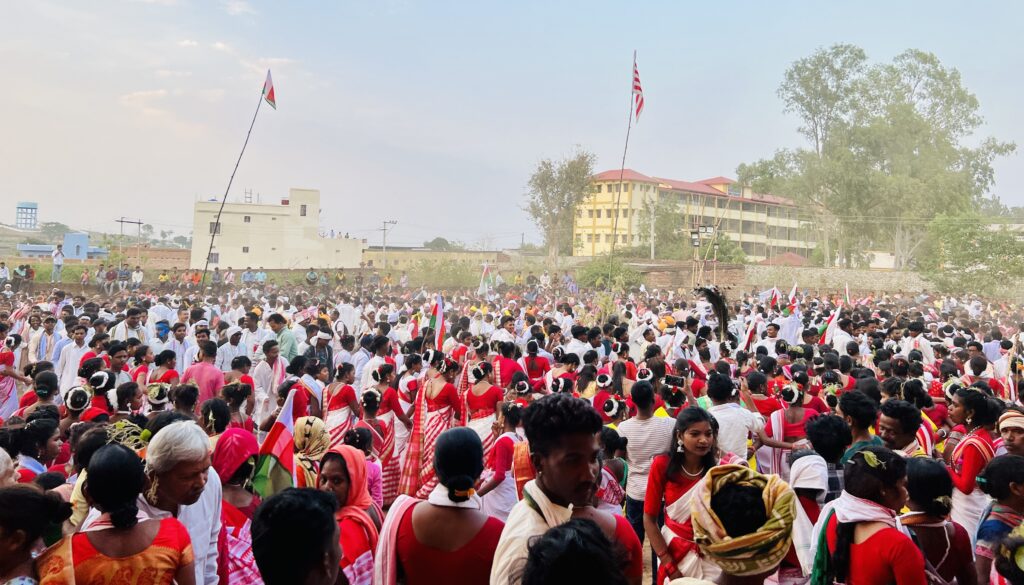
In the photo, tribal communities are performing the Sarhul dance, celebrating with Sal tree flowers (Shorea robusta) tucked behind their ears. Connected in a human chain, they move in circles, dancing to the rhythmic beats of traditional instruments like the dhol and mandars (bifacial drums).
Speaking of Indigenous Health
And how slowly we realise
that health is one of the petals
of the flower of culture.
Predicaments arise
when you look at the two apart.
You can never arrive
in spring with a torn flower.
You never get a boundless picture
if you only memorized public health theories
but have never felt the opulence
of sal flowers tucked
behind your ears on Sarhul.
*Sarhul is an indigenous spring festival in Jharkhand, India.
Europe is currently experiencing the worst energy crisis in global history. Following the onset of the Russian invasion of Ukraine, the intersection of physical, behavioral, and economic household-related dimensions of energy has been amplified. Funded by the Kosciuszko Foundation, this project's central question was, “How does the energy crisis impact weathering stressors stemming from the housing and energy continuum?”
A research group of 19 residents in Wrocław, Poland, participated in this Photo Voice study. Utilizing a grounded theory approach, data analysis consisted of triangulating results from survey responses, collected photographs, and recorded semi-structured interviews. The results revealed how the energy crisis influenced life satisfaction, loneliness, social support, health, and well-being. The weaponization of energy by the Russian state emerged as a key theme.
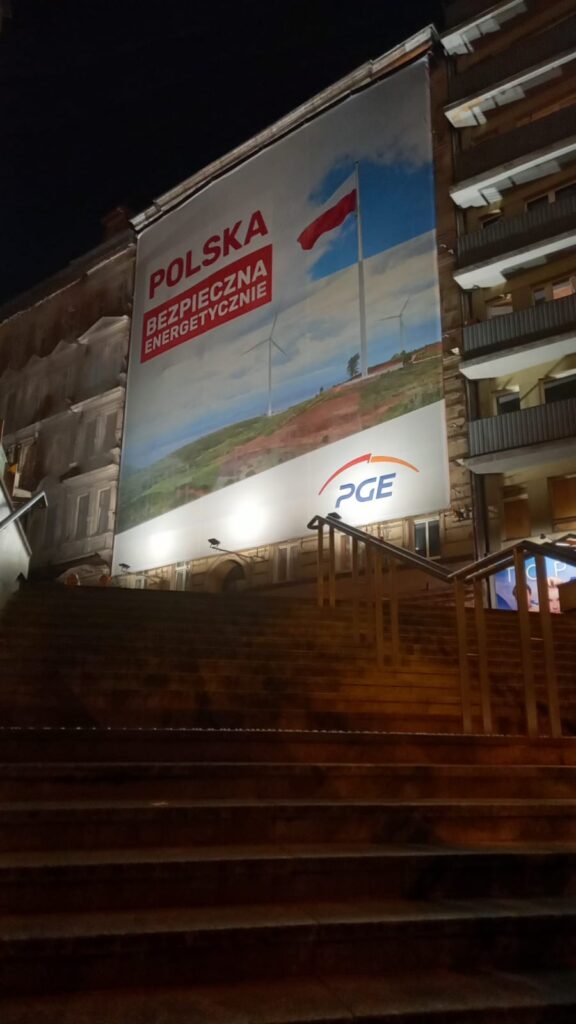
This photo was captured by a 35-year-old Ukrainian male who is a home renter. The participant explained that the Polish government is insufficiently addressing the Russian state’s weaponization of energy. Collectively, participants in the study exhibited feelings of hopelessness due to certain aspects of their daily life being out of their control. The constant stress of not having the capacity to appropriately address energy-related hardships contributes to the weathering of biopsychosocial health and well-being among Polish residents.
By examining participants' lived experiences, this research highlights the energy crisis's impact on public health research and policy. Conducted in southwestern Poland where cold weather and heating issues are significant, these issues are potentially worse in mountainous regions. However, housing conditions across Poland are outdated, impacting structural and technical components. The results of this study inform public health and housing advocates, and contribute to developing measures for addressing weathering stressors among Poland's historically oppressed population.
This study, approved by the University of Wrocław (UW) Ethics Committee, is part of the project "Exploring Aging on the Energy and Housing Continuum in Wrocław, Poland." All participants underwent training and provided written consent. Led by the Centre for Interdisciplinary Research into Health and Illness at the UW, the goal of this art-based research was to promote public health participation, awareness, and inform research and policy.
Contact: paul.mokrzycki@uwr.edu.pl
By Lisa Labita Woodson
Here is an original poem I wrote following a field visit to study sites in Loreto, Peru, along the Marañón River, a major tributary of the Amazon River. My research focused on the downstream impacts of COVID-19 mitigation efforts on adolescent pregnancy in one of the country’s impoverished regions marked by a high rate of adolescent pregnancy and poor maternal and child health indicators. It outlined pathways that connect the risk of adolescent pregnancy to several ecological system factors from the macro, micro, and individual levels such as poverty, lack of education and health care access, and social and gender norms that limited female autonomy and helped to conserve the practice of early unions. In addition, communities faced new challenges posed by the widespread adoption of technology among adolescents amplified during the pandemic. This poem weaves together different lived experiences of young girls in the Amazon synthesized from data collected from interviews and focus group discussions with adolescents, apus or community leaders, and educators, as well as secondary data sources and field observations.
Heavy rain floods through open windows
puddles across the wooden plank floor
traffic worn from chickens and children
impatient for the season’s end
as they wait like islands on the Marañón.
A pregnant girl rests her swollen body
across the warped metal rocker
careful to balance her weight while
pushing her feet firmly onto the ground
and her back to the chair’s spine.
In the dry season, she had played
voley in the open fields before her
that now pool above her waist
threatening to swallow the bodies of girls
too young to carry to term.
In the secret pleasures of the oscura,
he had exposed her with his body’s weight
and used his cell phone to examine her
pubescent breasts before abandoning her
for otro trabajo down the Marañón.
Yet she still waits, days swollen by tears
she does not cry but floods the haul
of the peke peke used to carry her body
upriver to Nauta’s eroded oil-slicked banks
but not time enough to save her
—and her unborn child.
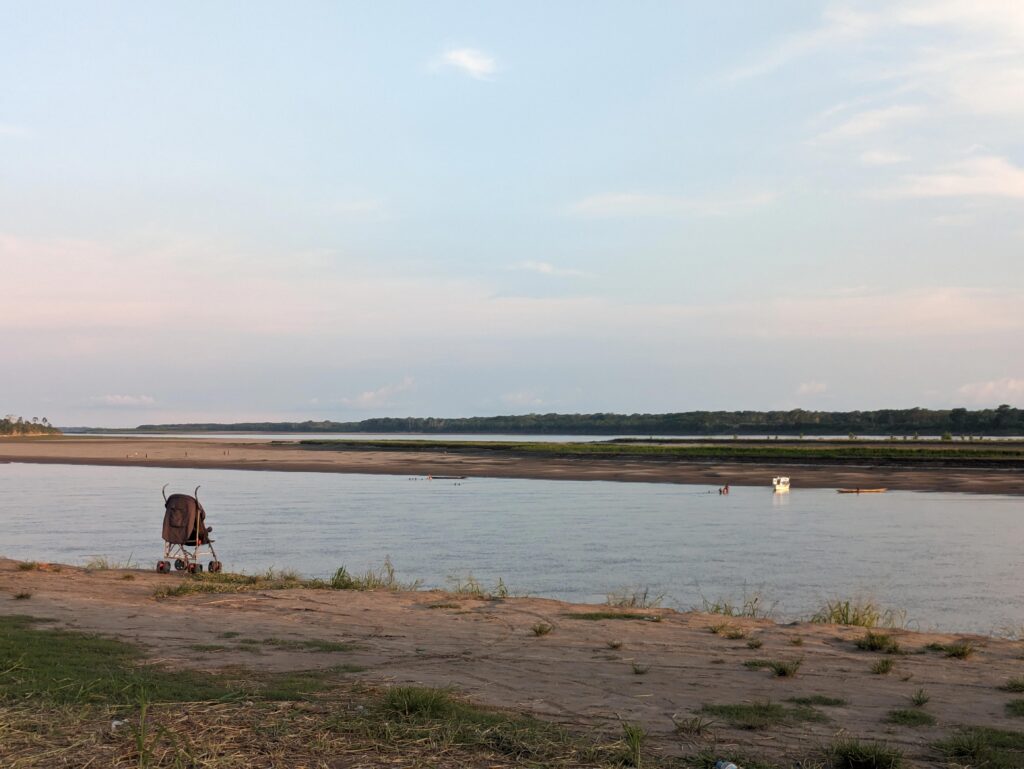
Please note that this is a sample Gallery entry as it has been previously published.
Woodson, L. L. (2023). The Power of Poetry: Rethinking How We Use Language in Global Health Research. American Journal of Public Health, (0), e1-e2. https://doi.org/10.2105/AJPH.2023.307495
By Priyanka Ravi
Beedis are hand-rolled smoking tobacco manufactured in India. The process of making beedi includes collecting tendu leaves and tobacco, rolling them into beedis, then sorting, labelling, wrapping, and packing of beedis. Majority of the employees who are responsible for rolling beedis are women. They are paid Rs. 250 to 300 ($3.00 to $3.60 USD) to roll a thousand beedis. In this picture, a beedi roller has wrist pain due to the constant rolling of tendu leaves with tobacco fillers. These workers experience chronic pain in the wrist, upper and lower back, shoulder, and leg as they sit in the same position for long hours. A beedi worker says,
“I use a painkiller or analgesic spray for my pain and tie a cloth after applying the spray to keep my hand warm. That provides some support to my wrist while working.”
These workers practice self-medication or use home remedies to control chronic pain, and some of them continue to work in pain. There is no definite work time, so some of the workers start to work from 1:00 pm to 1:00 am or until they finish 1000 beedis. There is a need for safe health work policies to improve the life of these workers.
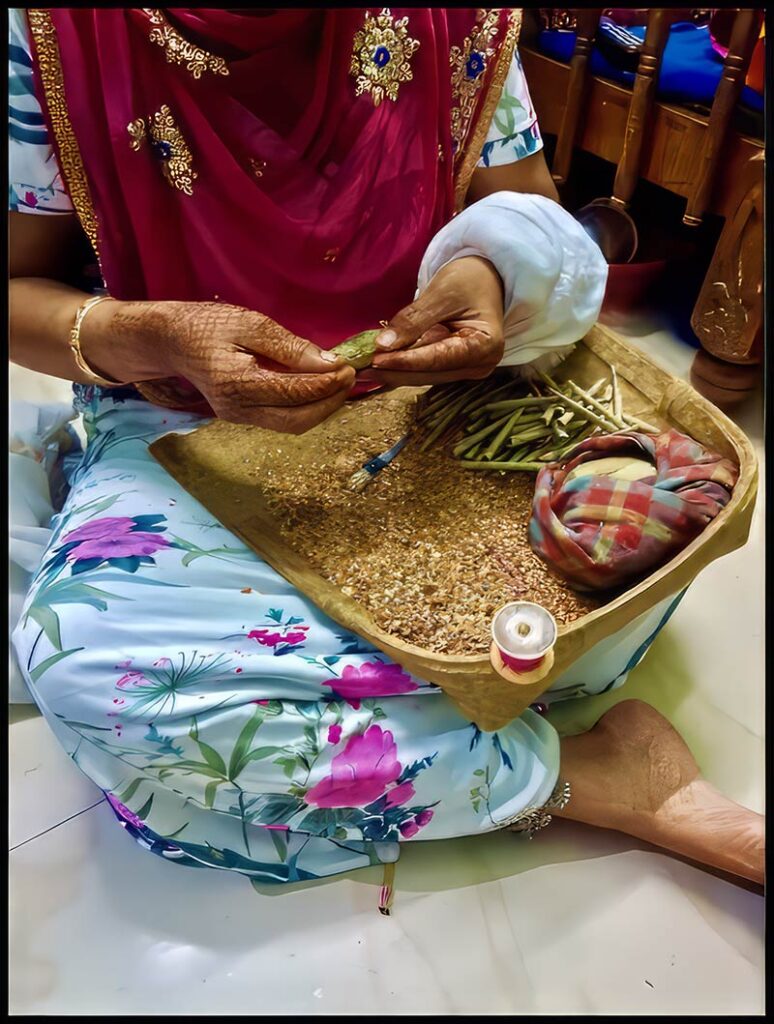
Credit: Husna Banu, Beedi workers and community member
Beedis are hand-rolled cigarettes and most used smoking form of tobacco in India. Various health effects of beedi have been reported; however, there is scant evidence on the potential health effects of tobacco on beedi workers. The aim of this project was to explore the experiences and challenges faced by the women beedi workers handling unburnt tobacco using Photovoice, a community-based participatory method. We recruited 20 women involved in beedi rolling for at least a year. One-day training was conducted on principles and ethics of photography, photo consent and safety, field practice using digital cameras, and group discussion and reflection about the photovoice. Participants were then asked to take pictures of what best represents occupational health challenges in their workplace. Photos were taken for four weeks, and after every seven days, the participants discussed the pictures with the research team. The major themes were health problems, alternate employment, occupational constraints, household responsibilities, interpersonal relations, children's health, social inequality, and economic burden. Empowerment measures include thinking about the problem, leadership, facilitation, photography, and presentation skills. Photovoice exhibitions were arranged within the community for community leaders, community members, and policymakers. The project findings provide a better understanding of health and social challenges. Written informed consent and photo release consent have been obtained from the participants.
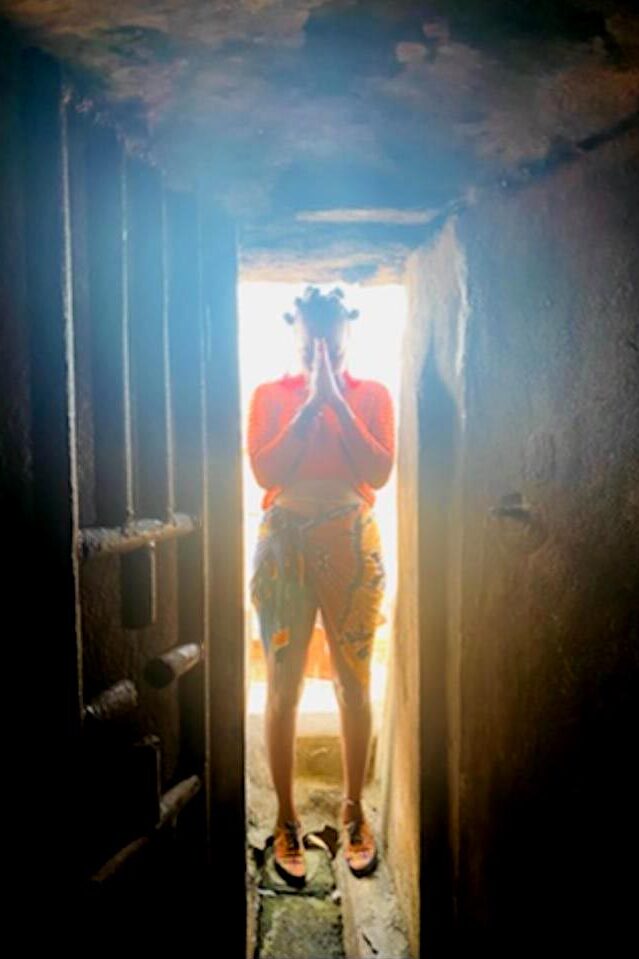
Photo of the Author, returning to face the “Door of No Return,” located on the Gold coast of Ghana, West Africa where enslaved persons where transported as human cargo and shipped to North America and the Americas.
By Shameka Poetry Thomas, PhD
All I know is that growing up Black-American in North America, I have been socialized and surrounded by whiteness my entire life. Even while graduating with distinguished honors from a historically Black college in Atlanta, Georgia. Even while growing up in Black Miami, attending an African Methodist Episcopal church. Even while returning and living in an African majority space (Ghana), I notice the middle passage within my tongue, my accent, and my brain cells. Whiteness like a thunder, still psychologically present, hegemonic, and consuming. No matter the physical location on this planet, there is no escaping the ramifications that colonialism left behind. That shadow. Everything about my existence becomes questionable because of it: my chocolate skin, my hair, my eyes, my ovaries, my infants, my breath, my jogging through neighborhoods. Even words like “third world” or “developing country” have undertones of neocolonialism, specifically about the “world-order” because it neglects to acknowledge that natural resources are taken from such nations to sustain the global economy of first-world, developed nations. coughing: Europe and / or North America*
Radical self-care, for me, meant returning to the “Door of No Return,” to stand facing-forward. Discovering my inner beauty without the shadow of the white gaze in my mirror, hunting me in my travels or in my writing. Toni Morrisons’ novels holding me at night. Radical self-love also meant refraining from the romanization of continents and populations that has been raped. I had embraced that this journey is not pretty, which makes it so naturally sweet. And for some people, naturally sweet is—bitter: Aloe Vera, tea oil, cayenne pepper.
A beautiful voyage into chocolate. Could that ever be possible without it being sci-fi? Could I write about what it means to be psychologically independent from oppression? Could I experience the gorgeousness of human life across the African Diaspora and call it pleasure, beyond it being seen as “dirty” and “exotic”? Could this narrative be seen as sacred and holy, as it is? Meaning, could I call myself a traveler without Europe or Europe’s hand in my pocket? Do I even know what that means? Would my audience even know what that means? Could I be that free? I do not know.
What I do know is:
Ultimately, when I say the African Diaspora, I do not necessarily mean only visiting countries of the transatlantic slave trade or “middle passage,” or between West Africa and the Americas. Every city on this planet was severely impacted by the transatlantic slave trade. There were also countries that were impacted by colonialism, beyond being a direct portal of human cargo. I am particularly curious, however, about what it means to see and perceive my own lived experiences (in my own chocolate skin), in any country where I can allow myself to tap into the metaphysical realm of my inner voyage as true self-discovery and political pleasure.
Can I stand in this “door of no return” and give honor to grandmothers whose names I will never know? Names stolen; bodies raped. Can I stand in this doorway and cry by myself? Can I allow myself to be upheld by invisible ancestors who whisper affirmations and drums to soothe my heart, as a long lost granddaughter returning? Can I not speak in English? Can I not think like an American? Can I step outside my socialization? Can I put my hair in Bantu knots and wear waist beads and be seen as goddess and glory?
By Tina Samsamshariat
These images and accompanying narratives are provided by agentes comunitarios de salud (ACS) or community health workers with the Mamás del Río project, sharing their personal experiences during the COVID-19 pandemic in the Peruvian Amazon. These photographs were captured as part of my Global Health Equity Scholar/Fogarty research which examined how community health workers expanded their roles to mitigate the impact of COVID-19 pandemic within their communities. Informed consent and photo release consent were obtained from all study participants to share their photos.
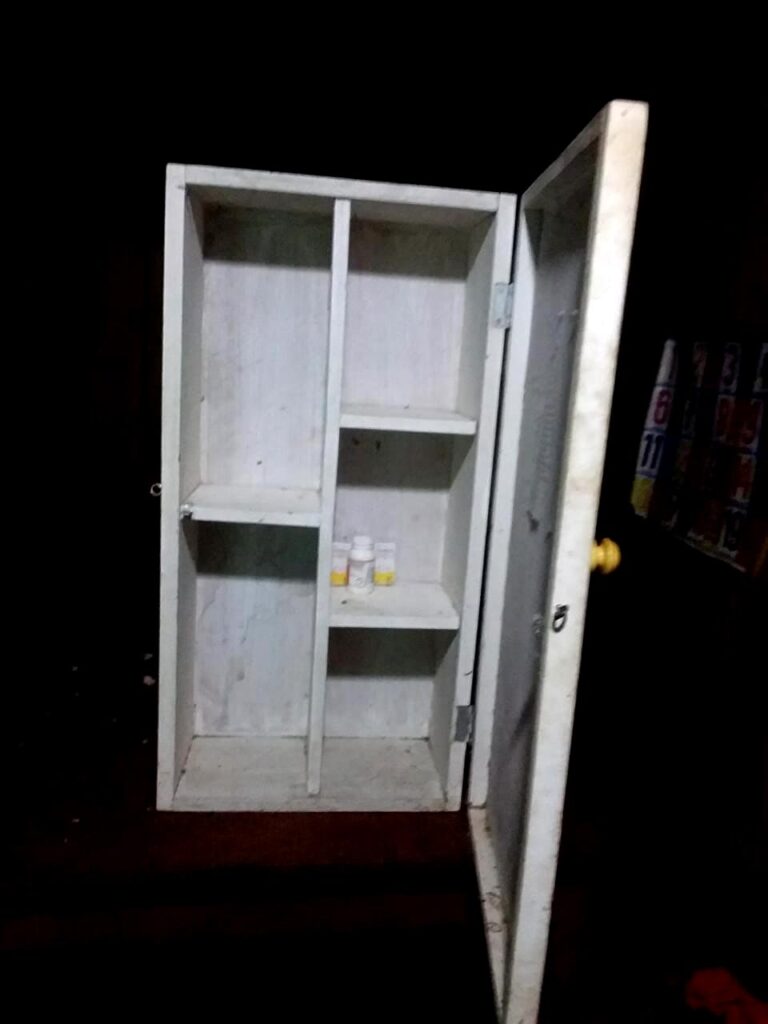
"This little box is a community medicine cabinet. In the community, it is the responsibility of the health promoter, and it is mainly for the benefit of the community. As an agent, I feel worried because it is empty. It is like a soldier who goes to war without weapons. You are left with great despair at not being able to provide support. The disease comes and we do not make it alive."
"Our role is not only to treat the patient, it is to support him so that he can reach the health post. Therefore, we must promote communal medicine cabinets with higher authorities. We want training on medicine administration, so that we can be prepared for an emergency in our community."
- ACS
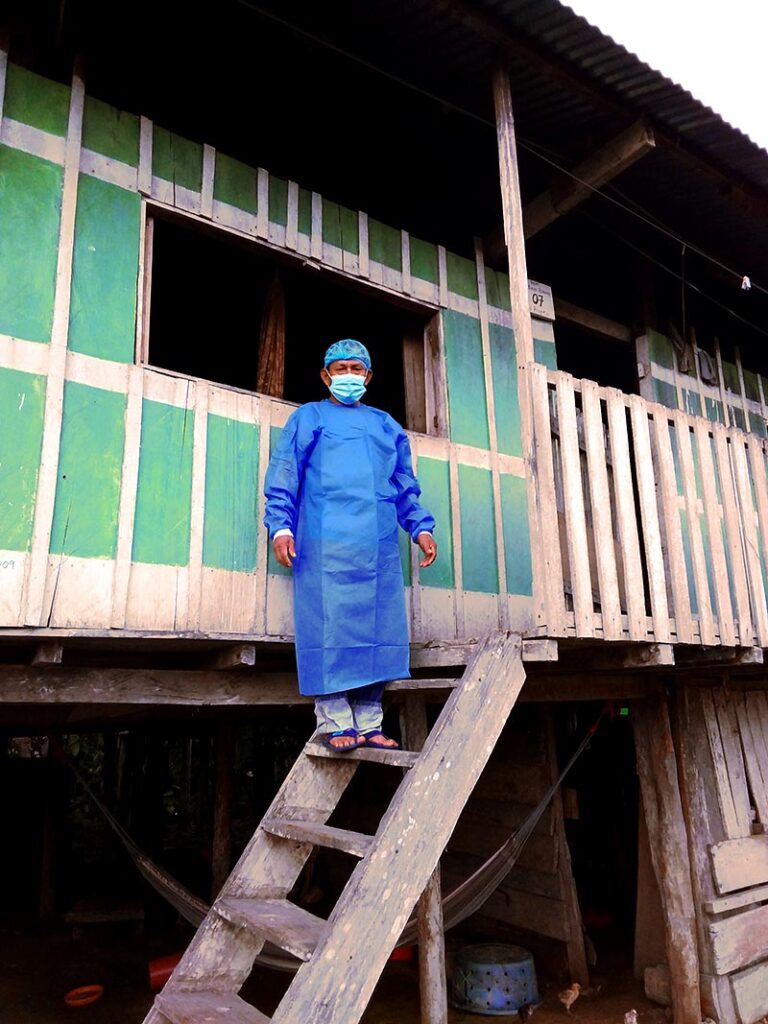
"A community health agent is visiting a community member with COVID-19 in the middle of the pandemic. At first I was afraid, but at that time, I would always check on [the patients] to see how they were, if they were getting better, if they were getting worse–that was my job. My will is great. I don't earn a penny; you don't earn any incentive, but I work for my community. There was a danger that some community members would die from COVID-19. For that reason, I had to worry. If they leave [their house] to go visit their neighbor, they will infect them. Thus, in order to avoid that, since I had protection, I would leave."
-ACS
"I was no longer afraid of death. I supported our patients by preparing their herbal remedies. We can teach our community members to prepare the remedies, and give it to them to drink, so that our community does not fall so hard in the pandemic."
Please note that this is a sample Gallery entry as it has been previously published.
Samsamshariat T, Madhivanan P, Reyes Fernández Prada A, Moya EM, Meza G, Reinders S, Blas MM. Hear my voice: understanding how community health workers in the Peruvian Amazon expanded their roles to mitigate the impact of the COVID-19 pandemic through community-based participatory research. BMJ Glob Health. 2023 Oct;8(10):e012727. doi: 10.1136/bmjgh-2023-012727. PMID: 37832965; PMCID: PMC10583076.
By Adriana Garcia Saldivar
In January 2023 there were a series of protests in Peru against the government of Dina Boluarte, happening with more force in the southern regions. In Juliaca (Puno) state forces victimized 18 people, many of them young people, in a display of racism and abuse of power. This city is characterized by having a very cold climate, its streets are mostly not paved, drinking water and sanitation services are needed; and like many areas of Peru, they lack quality basic services. In this context, a young woman was giving birth during a massacre, having to face the precariousness of the health service, obstetric violence and state terrorism.
The poem begins from the perspective of the researcher who is in charge of a focus group of young women in Juliaca, applying this methodology as part of an investigation to understand subjective well-being. Throughout the poem the researcher narrates her own reflections from beginning to end, describing what she hears and observes, the changes in herself and in the group, all while they eat lunch in an increasingly welcoming and safe space.
Las chicas saltan las bolsas de basura,
se sacuden del frio y de los muros altisonantes,
de cada esquina y de sus vueltas sin asfaltar.
Adentro, pasen
Si abro la ventana huele a gas lacrimógeno, todavía,
y huele a leche, yogurt y shampoo.
Ellas van formando un cerco,
apretadas y bajitas,
ellas y Juliaca
como un cintillo apretando,
sí, es un cerco humano,
sí hay café, si hay
Una cabecita sin pelos, una mandarina,
voltea y babea sobre su madre
Ah, la leche y el shampoo,
sostengo y paso,
me siento y trago
Juliaca 2023
Ella me dijo que cargaba a dos,
no un herido,
pero si iba a cuestas y sangrando,
subiendo y bajando
entre gases, casquilllos y miedo,
ella también marchaba
Todas las rutas para llegar al hospital
y toda la gente corriendo hacia allá,
apretando el mar humano, asfixiando.
Entre el ácido no hay sala de parto,
pero le brotó del pecho y del vientre
rojos y blancos, respirando.
Sin paro es lo mismo dice
igual los gritos, igual te hacen llorar
Borboteamos
...
La misma ciudad,
de calma tétrica,
de bullicio alarmante,
de un silencio inquietante,
El paro, el paro, el parto
Esa noche, todos murieron esa noche,
pero aquí están,
la mandarina y el shampoo,
la leche y el yogurt
El cerco es más cálido y pequeño, todas se pegan más,
se trenzan los brazos, el cuerpo
Juliaca 2023
y una ronda más de café.
This is a sample Gallery entry as it is waiting to be translated in English. An updated version will be available at a later date.

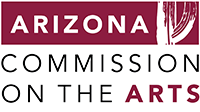
©2024. Made with (❤︎) in Yachayninchik